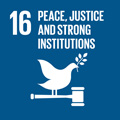- Docente: Alessia Zampini
- Credits: 9
- SSD: ICAR/19
- Language: English
- Moduli: Alessia Zampini (Modulo 1) Alessia Zampini (Modulo 2)
- Teaching Mode: Traditional lectures (Modulo 1) Traditional lectures (Modulo 2)
- Campus: Ravenna
- Corso: Second cycle degree programme (LM) in Engineering of Building Processes and Systems (cod. 8829)
-
from Oct 03, 2024 to Dec 19, 2024
Learning outcomes
At the end of the class, student has knowledge of the history of architectural conservation and its evolution during the two last centuries. In particular, at the end of the course he/she is able to critically identify the principle of historical building conservation and the effects of their application on the present built environment.
Course contents
Heritage preservation, referred to buildings and monuments, in its modern meaning, is a relatively recent field of study. In just over two centuries, many theories have been developed. During the course, students will be provided with the basics of the history of the discipline, trying to link the theoretical statements of the scholars to the practical results of their action, dealing with theories and ideas, but also work, projects and technical aspects.
Readings/Bibliography
- J. Jokilehto, An history of Architectural conservation, Routledge, 2017 (2Ed.) available online in a different edition at: https://www.iccrom.org/publication/history-architectural-conservation
- M. Glendinning, The conservation movement. A history of Architectural preservation, Routledge, 2013;
- J. H. Stubbs, Time Honored. A global view of Architectural Conservation, Wiley & Sons, New Jersey 2009
- M. Petzet, International principles of preservation, ICOMOS, 2009, https://openarchive.icomos.org/id/eprint/432/1/Monuments_and_Sites_1_Charters_Petzet.pdf
- E. E. Burden, Illustrated dictionary of Architectural Preservation, Mc-Graw Hill, 2004;
- Caccia, S. - Restoration in a Few Words: Methodology and Techniques
Further readings will be suggested during the lessons.
Teaching methods
Ex-cathedra lessons; Group and single exercises; On site visits
Assessment methods
The final exam consists of an oral discussion aimed at the evaluation of the theoretical knowledge acquired, the possession of a specific language and the acquisition of an organic vision of the topics covered in class.
Moreover the students (alone or organized in groups of 2-3) will present the outreach of their personal critical analysis conducted on a case studies established together with the teaching team.
Good or excellent grades can be achieved by students who demonstrate a critical knowledge of the subject, who are able to apply theoretical concepts to practical examples and make use of an appropriate language. Mostly mnemonic knowledge, limited abilities of synthesis and analysis and imprecise language lead to grades ranging from discrete to sufficient. Important gaps, inappropriate language, lack of an overview of the topics covered will inevitably lead to a barely adeguate grade or to a negative evaluation.
Teaching tools
The students will have access to the Virtual platform where they will be able find additional the didactic materials and additional sources such as readings, and self-evaluation questions. Thanks to these they will be able to properly follow the course and assess their own comprehension step by step.
In addition, the exercise, aimed at recognizing a specific methodology of intervention and developing a critical thought will allow students to have a constant dialogue with professors and to take stock of the progress their preparation.
Office hours
See the website of Alessia Zampini
SDGs




This teaching activity contributes to the achievement of the Sustainable Development Goals of the UN 2030 Agenda.
